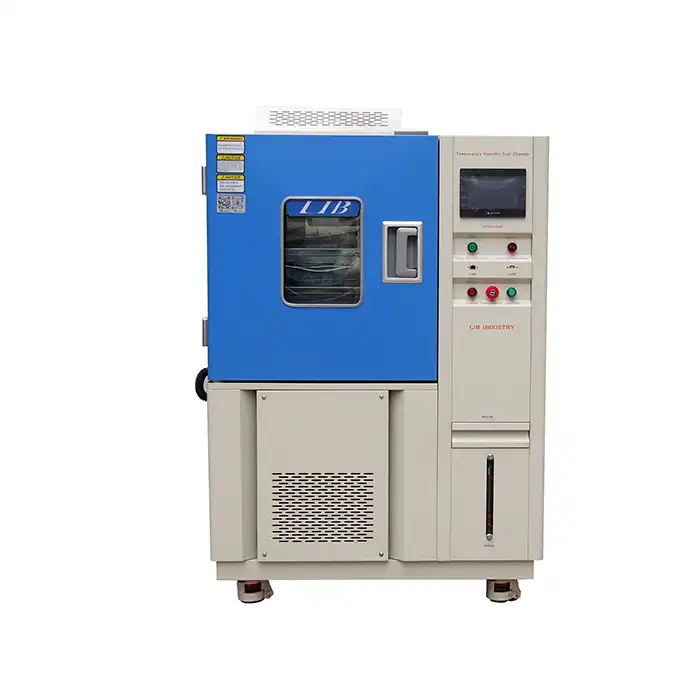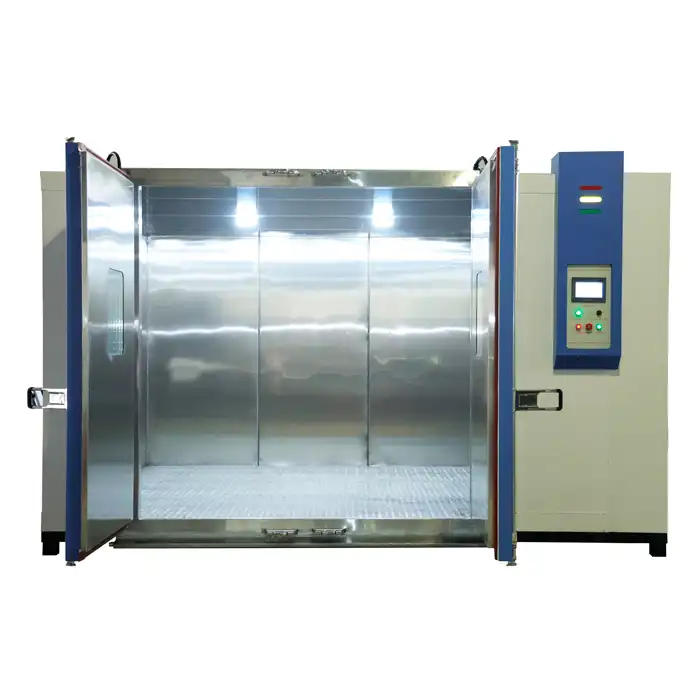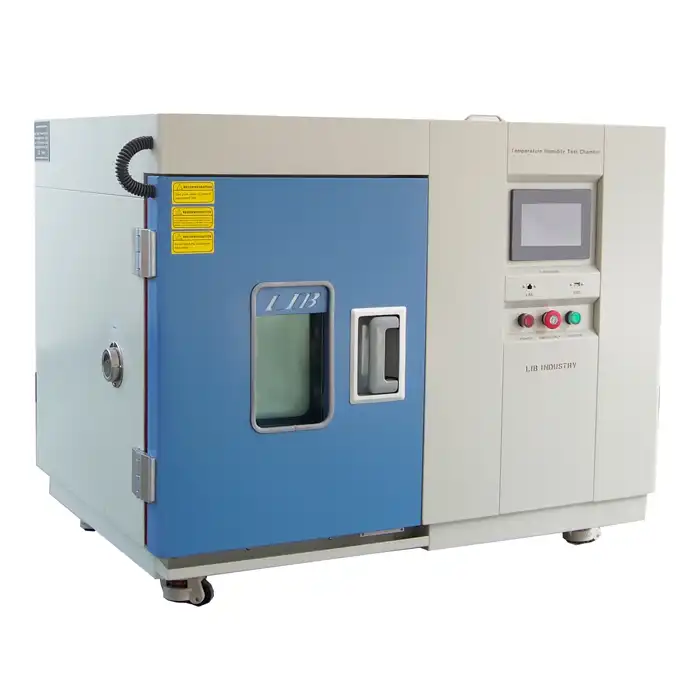What is the IP standard for dust?
When it comes to environmental testing and ensuring the durability and reliability of products, understanding the IP (Ingress Protection) standard for dust is crucial. This article will delve into the specifics of the IP standard, focusing on its relevance and application, particularly within the context of dust IP test chambers.
Understanding the IP Rating System
The IP (Ingress Protection) rating system, defined by the international standard IEC 60529, provides a comprehensive framework for assessing the protection level of mechanical casings and electrical enclosures against environmental factors. This standardized rating system helps consumers and manufacturers understand how well a device is shielded from both solid particulates and liquids, ensuring reliability and safety in various operating conditions.
An IP rating typically comprises the letters "IP" followed by two numerical digits. The first digit represents the degree of protection against solid objects, such as dust, ranging from 0 to 6. For example, a rating of IP5X indicates that the device is protected against dust ingress that could harm its operation, though it may not be entirely dust-tight. Conversely, a rating of IP6X signifies complete protection against any dust penetration, ensuring that no dust particles can enter the enclosure and cause damage or malfunction.
The second digit in the IP rating denotes the level of protection against water. This digit ranges from 0 to 9, with higher numbers indicating increased resistance to water ingress. An IPX4 rating means the device can withstand water splashes from all directions, while an IPX7 rating indicates that the device can endure immersion in water up to a specified depth and duration without suffering damage.
Understanding the IP rating is crucial for selecting the appropriate equipment for specific environments. For instance, in dusty industrial settings or outdoor applications prone to wet conditions, devices with higher IP ratings are essential to ensure operational integrity and longevity. This understanding helps in mitigating risks associated with dust and water exposure, thereby enhancing the performance and durability of electronic and mechanical systems.
The Role of Dust IP Test Chambers
To achieve and validate an IP rating for dust protection, manufacturers use specialized equipment known as dust IP test chambers. These chambers simulate dusty environments to test how well products can withstand exposure to dust particles.
Dust IP test chambers are designed to create controlled conditions that mimic real-world dusty environments. They typically feature:
Adjustable Airflow
One of the primary features of dust IP test chambers is their ability to simulate a range of dusty conditions through adjustable airflow systems. These systems can create various intensities and velocities of air movement, mimicking conditions from mild dust exposure to severe dust storms. This variability allows manufacturers to test how well their products can handle different levels of dust exposure and airflow dynamics.
Variety of Dust Types
Dust IP test chambers are equipped to use different types of dust particles, such as sand, cement, or other particulate matter, depending on the specific requirements of the test. This variety ensures that products are tested against multiple dust types, which can have varying properties and effects on the equipment. By exposing products to these diverse dust particles, manufacturers can evaluate their performance in a broader range of potential environments.
Precise Control
Advanced dust IP test chambers come with sophisticated control systems that maintain precise and consistent test conditions. These controls regulate factors like temperature, humidity, and dust concentration to ensure that each test is conducted under the exact conditions required by international standards. This precision is crucial for obtaining reliable and reproducible test results.
Comprehensive Monitoring
To accurately assess how products perform under dusty conditions, dust IP test chambers are equipped with a range of sensors and monitoring systems. These tools track various parameters, such as the ingress of dust, the operational performance of the product, and any signs of malfunction or degradation. Comprehensive monitoring helps identify potential weaknesses and allows for a detailed analysis of how dust affects the product's functionality.
Using these chambers, manufacturers can identify potential weaknesses in their products and make necessary improvements to enhance dust resistance. This process is vital for ensuring that products meet the required IP standards and perform reliably in harsh environments.
Benefits of Achieving High Dust IP Ratings
Achieving a high dust IP rating offers numerous benefits, particularly in industries where equipment reliability is paramount. Here are some key advantages:
Enhanced Product Durability
Products with high dust IP ratings, validated using a dust IP test chamber, are more durable and can operate effectively in dusty conditions. This durability is particularly important for outdoor equipment, industrial machinery, and consumer electronics that are exposed to varying environmental conditions.
Increased Customer Confidence
When products are certified to meet high dust protection standards, it boosts customer confidence. Consumers and businesses are more likely to trust and invest in products that are proven to withstand harsh environments, leading to higher sales and customer satisfaction.
Competitive Advantage
In a competitive market, having products that meet stringent IP standards can set a company apart from its competitors. It demonstrates a commitment to quality and reliability, which can be a significant selling point.
Reduced Maintenance Costs
Products that are resistant to dust ingress require less frequent maintenance and repairs, resulting in lower long-term costs for users. This reliability translates to cost savings and less downtime, which is especially beneficial for industrial and commercial applications.
Conclusion
Understanding the IP standard for dust and the role of dust IP test chambers is essential for manufacturers aiming to produce reliable and durable products. By achieving high dust IP ratings, companies can enhance product durability, increase customer confidence, gain a competitive advantage, and reduce maintenance costs.
If you want to learn more about this kind of dust IP test chamber or need assistance in selecting the right equipment for your needs, feel free to contact us at info@libtestchamber.com. Our team of experts is here to help you navigate the complexities of environmental testing and ensure your products meet the highest standards of quality and reliability.
References
1. International Electrotechnical Commission (IEC). (2017). IEC 60529: Degrees of protection provided by enclosures (IP Code).
2. Schneider Electric. (2020). Understanding IP Ratings and What They Mean for Your Equipment.
3. ASTM International. (2019). Standard Test Methods for Dustiness of Materials Using a Dust Generation Test Chamber.
4. Instruments and Equipment Services. (2021). Dust Testing Chambers for IP Ratings: How They Work and Why They Matter.
5. Siemens AG. (2022). IP Ratings Explained: What They Mean for Your Equipment.
6. Test Equipment Depot. (2021). The Importance of Dust IP Ratings and How Test Chambers Validate Them.











